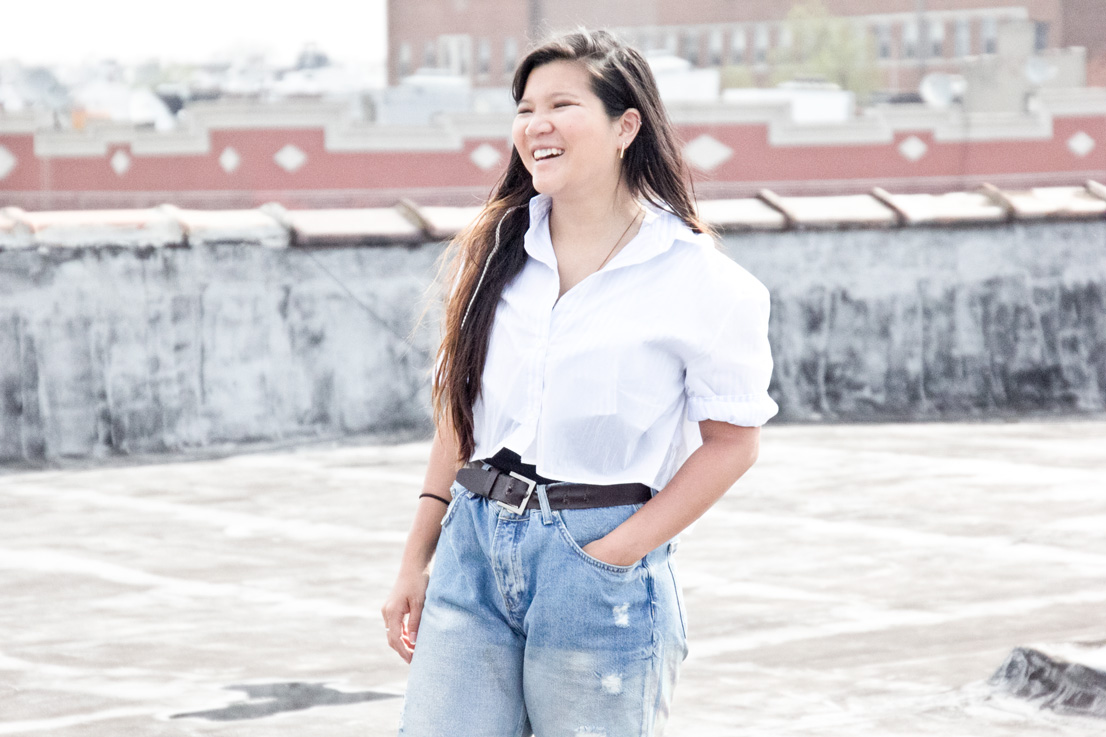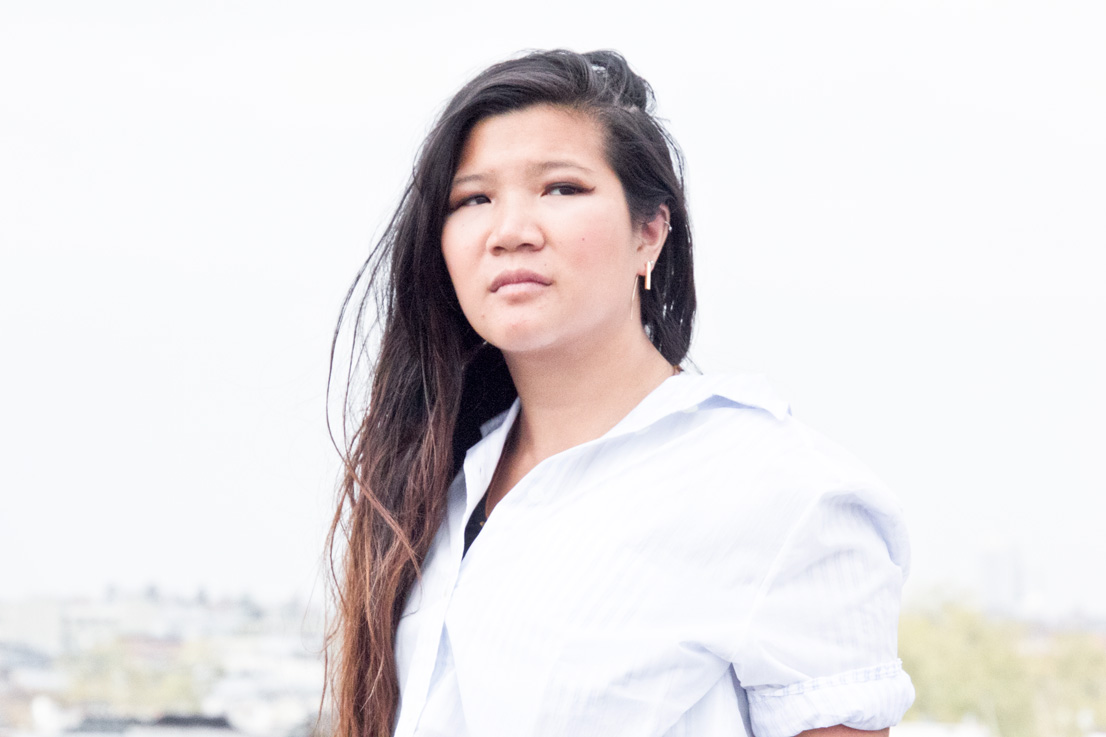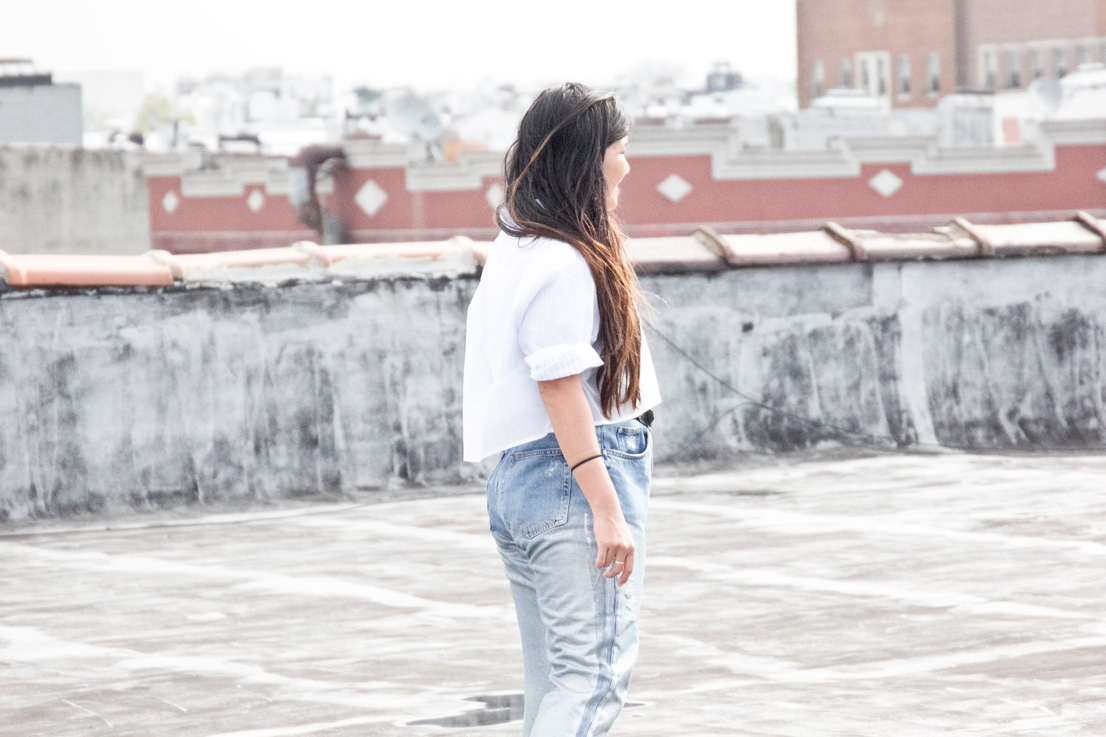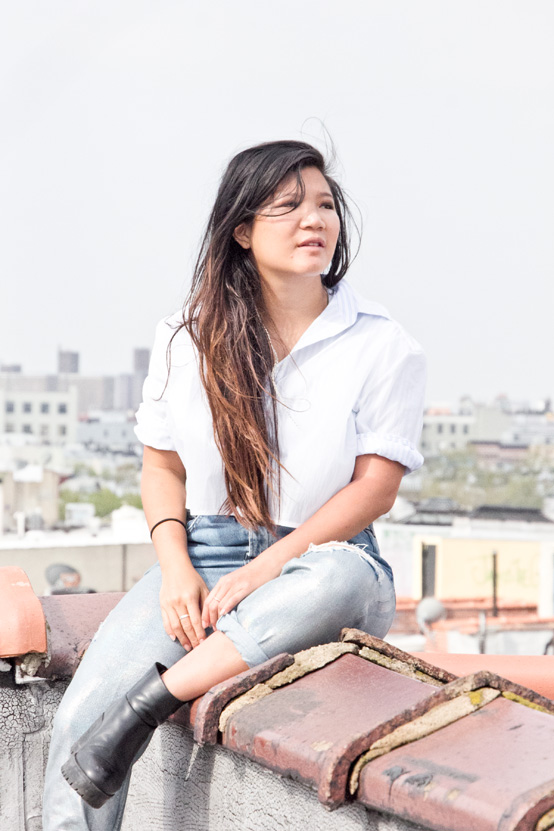If there’s one thing we’ve learned from the women we interview, it’s that sometimes not having a plan is as good a move as having one. Take ADAY editor, Annette Lin for example. Her career to date is full of career moves driven by gut instinct and taking calculated gambles on blink-and-you-miss-them opportunities. You know, the kid of sliding doors moments that could have taken her career in whole host of different ways; moves that, looking back now, all make a lot of sense.
[show_shopthepost_widget id=”1666596″]
Rather than starting the official fashion route, she took up a job as the editor of an Oxfam magazine while still at university. Unplanned? Yes. Time consuming? Most definitely. But it laid the foundation of what later turned into a reporter’s role at the Sydney Morning Herald, not to mention a permanent role at Vogue Australia online. She’s not one to rest on her laurels so the moment she felt like she’d learned what she could from the role, she picked up, packed her bag and headed to London, where she went on to hold positions at the likes of the Financial Times and MatchesFashion.com.
If there’s one message you should take away from her story, is that when life circumstances allow you to be bold. Do it! To quote Woody Allen, “80 per cent of life is showing up”. Here, Annette talks ‘leaning in’ to opportunities as and when they arrive, why you can only improve if you try (and sometimes fail) first and why she lives and breathes in ADAY’s Hail Yes Trackpants. Enjoy…
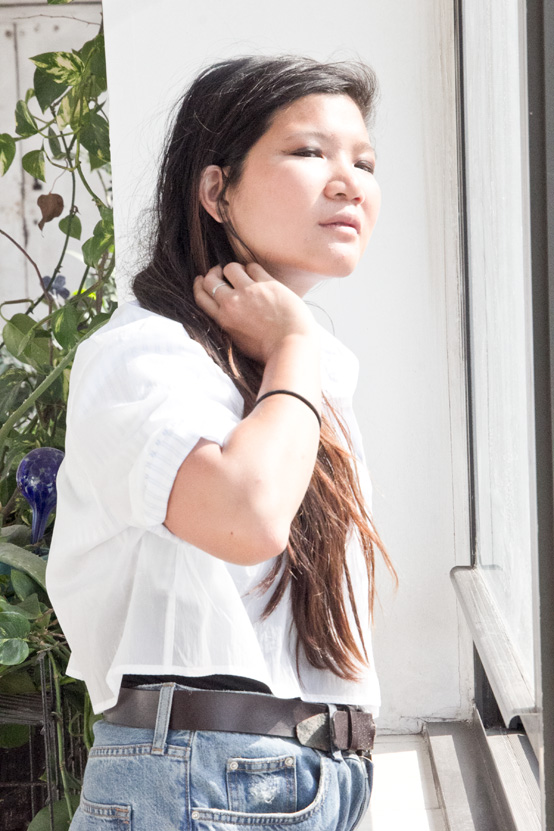 HER START: I started my career as the editor of Oxfam Australia’s Magazine, Three Things. It was specifically targeted at youth and was part of their Three Things program, which is still running today and tries to engage young people to get involved with the issues Oxfam cares about. They advertised it at my university and I just went for it. I think they liked me because I had this grand vision of making environmental and NGO issues “cool”. During my time there we had a bold, graphic design aesthetic; managed to get an interview with a big-name Australian designer known for her eco-friendly practices; and we also did a fashion shoot with an amazing young stylist with brands that focused on eco-friendly and sustainable practices. It was so much fun to start something from scratch like that. I could do it mostly because I had magically juggled my schedule so that I was only at university two days a week (literally, time management was everything!) and, because I’m nuts, I also had an internship at the same time. It was a lot of weekend work but the team I worked with were so badass and talented that we really supported each other. When you’re working with amazing people it doesn’t necessarily make the workload easier, but it does makes the result so much more satisfying and worth it.
HER START: I started my career as the editor of Oxfam Australia’s Magazine, Three Things. It was specifically targeted at youth and was part of their Three Things program, which is still running today and tries to engage young people to get involved with the issues Oxfam cares about. They advertised it at my university and I just went for it. I think they liked me because I had this grand vision of making environmental and NGO issues “cool”. During my time there we had a bold, graphic design aesthetic; managed to get an interview with a big-name Australian designer known for her eco-friendly practices; and we also did a fashion shoot with an amazing young stylist with brands that focused on eco-friendly and sustainable practices. It was so much fun to start something from scratch like that. I could do it mostly because I had magically juggled my schedule so that I was only at university two days a week (literally, time management was everything!) and, because I’m nuts, I also had an internship at the same time. It was a lot of weekend work but the team I worked with were so badass and talented that we really supported each other. When you’re working with amazing people it doesn’t necessarily make the workload easier, but it does makes the result so much more satisfying and worth it.
ON GOING THE TRADITIONAL JOURNALISM ROUTE: To be honest—like really honest—you don’t need to go to journalism school. I went, loved it and met some of the smartest, wittiest people in my life there, but a lot of it is practical and best learned on the job. I think the best training you can have is to have a really keen sense of what’s going on in the world and what’s going on in your area of expertise, and to also observe other people who tell stories the way you want to, not just in structure, but also in style. Sure, you’ll change your tone of voice to suit the publication, but it’s just as important to discover your own perspective and to have a strong authority. Once I wrote to a fashion editor I really admired, telling her how much I loved her style and while she was really sweet about it, she also said one of the most important things was finding one’s own.
HER FIRST NEWSPAPER GIG: I mean, the Sydney Morning Herald is one of Australia’s pre-eminent newspapers so as a young journo, you would want to work at the Herald. I’ve always been more attracted to lifestyle writing than straight news writing though, so I originally started as a general writer on all the newspaper’s supplements—I wrote career articles and car articles too—but I already knew I was interested in fashion and food so I focused on those, and obviously when the opportunity to assist at Australian Fashion Week came up, I jumped at the chance. Side note: writing on food was pretty dangerous, especially when you’re interviewing someone at a chocolate factory.
ON WORKING AT VOGUE AUSTRALIA: I first started interning there during my final year of university. Back then Vogue Australia didn’t really take internships but I found the features editors’ email and contacted her anyway, and she agreed to let me come in one day a week and help her. I found out that they needed help on the digital side—which at the time was separate from the magazine team—so I offered to come in an additional day each week (again, I’d structured my classes to two days a week). The team was only two people and me on the digital side, so there was plenty to do and I soon gained a lot of responsibility, and literally the day after my last class, I went into the office at Vogue.com.au to start working ‘officially’! Honestly though, I was so lucky—both the online editor and the features editor really took the time to mentor me, offering me any opportunities that arose, including going down to Melbourne to interview Serena Williams before the Australian Open. So fun!
BIGGEST TAKEAWAYS: I mean my university didn’t really teach digital journalism so working at Vogue online was my first experience even thinking about SEO. I soon got a crash course and began thinking about what people looked for and wanted online and now, nearly my whole career has been in digital so that was invaluable. Contrary to the opinion of people who meet me at parties, I’m actually pretty shy, plus I’m also a perfectionist, so the biggest lesson I learned there was not be afraid of my own work, and that even if it wasn’t perfect, there’s always another chance to get better. You can’t improve if you don’t even try, which is something I’m still working on.
ON LEAVING VOGUE AND HOW LONG TO STAY IN A ROLE BEFORE MOVING ON: Numbers look good on paper but really they don’t mean as much as they should. I learned more in my six months with Vogue.com.au than I have in other jobs I’ve stayed at for longer, and those six months meant so much to me, especially at such a nascent point in my career. I’ve had other jobs where, looking back, I probably wasted a year or two. I think you should evaluate whether you’re still learning something in your role, and it doesn’t matter how senior you get, there’s always something to learn. Leaving Vogue and moving to London was pretty much an accident but it was probably the most life-changing accident of my life. The media landscape there is so broad, and the fashion media especially carries such authority and I think you start to appreciate how much influence your work has.
ON STUDYING DIGITAL & SOCIAL MEDIA AT LONDON COLLEGE OF FASHION: I’d always wanted to work in print, and a part of me will always love it, but let’s face it: digital is where the creativity is happening. What I love the most is you’re no longer restricted by medium, or time—look at this intersection of content and commerce that’s evolving today, and all the multimedia sites that mix sound, writing and video. It sounds cheesy, but the possibilities are endless, and that’s freaking fascinating. I already had digital experience, obviously, but I wanted formal training, mostly because, especially as a millennial (that dreaded word), most of what I know about online is very instinctive. Sometimes it’s nice to have someone confirm your suspicions. Also, it was a nice push to explore the digital realm further.
FREELANCE LIFE: I was super lucky, because I started helping at How to Spend It because of connections, but honestly I think it all boils down to reaching out to people. That’s how I got the gig at Vogue, and that’s how I eventually started at the Financial Times. It’s human nature—people want to work with people, not just names in an email, and while I think this works better in New York, I would really suggest emailing people and offering to buy them a coffee, or just network the hell out of yourself. Don’t be afraid to tell people what you’re looking for, or which publication you’re aiming for. The worst they can say is no, or ignore you.
JOINING THE TEAM AT MATCHESFASHION.COM: I was responsible for writing copy for the all of their womenswear social media channels like Twitter, Facebook, and Instagram. But it was also about developing the tone of voice, which of course is different across all channels, and sometimes dealing with fires that break out, either in-house or with customers. Social media is definitely about the nuances of communication. But what I loved most was that the role was so varied—I also styled and shot images, so it was almost like being a mini editorial team. You also work quite closely with the main editorial team to make sure the imagery and messages are consistent across the team. Matches’ editorial team is so great, a lot of them come from legacy media backgrounds, and their expertise in storytelling and luxury branding made it such a pleasure to work with them, and also expand my own skills in the area.
WORKING UNDER PRESSURE: I’ve always been someone who thrives under pressure—I love the adrenaline rush and the focus that comes with a situation where you need to work under pressure. Panicking like a duck only makes the situation worse and doesn’t help anybody. But definitely whether or not the pace works for you is something you need to think about, if your dream job is at a daily, a weekly, a monthly or a bi-monthly publication. At Matches, the pace went up and down—we planned everything a week in advance, but the thing with social media is that there are some things you can plan for, and some things you can’t…
WRITING FOR PUBLICATIONS VERSUS RETAILERS: Writing for retailers and publications both have their pros and cons—definitely when you’re writing for a retailer, you always have to consider whether or not there’s a product focus. If there isn’t, why are you writing it? At the same time, if you’re working with a retailer who sells really amazing products, it’s such a great opportunity to tell those stories. Essentially I think publications tend to be more people-focused, and retailers are obviously more product-focused.
THE BIG MOVE FROM LONDON TO NEW YORK: I’d always wanted to move to the US, and New York was where I had to be for the fashion and publishing industry. This might sound weird to some, but New York is really daunting, especially coming from another country—you have to get a work visa, you’re far away from your friends and family, and, well, it’s cold (what can I say? I’m Australian!). But even as a child, I’d always poured over magazines my dad would bring back from business trips to the US, and then started ordering subscriptions for US Vogue and ELLE. The storytelling in New York is like nowhere else. So it was a pretty big deal for me to move, both for practical reasons and because I was finally admitting to myself that this was what I wanted.
WHAT TO CONSIDER BEFORE MOVING CITIES FOR A JOB: Obviously, everyone wants to know they’re going to have a job and an apartment when they move. But I can’t stress this enough: just because you don’t doesn’t mean you shouldn’t move. I’ve moved countries twice in my career, and one thing I’ve learned is that employers won’t really take you seriously until you’re actually there, because it shows a lack of commitment. So sure, you can search for jobs before landing but it’s not the world’s most efficient use of your time. If you want it badly, you should just move—and network the hell out of yourself once you get there. You might take a step back in your career, or a pay cut, or take a job that’s not exactly what you wanted. Maybe things won’t go as smoothly as if you had stayed. Be prepared to rough it. But life is short, and from my perspective, it’s totally worth it for what you’ll gain in the long run.
ON HER FIRST NEW YORK JOB: People don’t realise that even those emails you get saying your order has been confirmed needs someone to write them. Copywriting for Moda Operandi really opened my eyes to more aspects of the ecomm business, from writing subject lines and marketing emails to product descriptions and everything in between. People take words for granted but you don’t realise how much work goes into those! I’ve always freelanced more as a creative outlet for myself. If you’re creative, I think it’s important to have something where you can let your own voice come out.
I’ve moved countries twice in my career, and one thing I’ve learned is that employers won’t really take you seriously until you’re actually there, because it shows a lack of commitment. If you want it badly, you should just move—and network the hell out of yourself once you get there.
ON HER ROLE AS EDITOR & CONTENT LEAD AT ADAY: What attracted me to the role was the chance to push the boundaries of content. I’ve mentioned this before: the digital world is so fascinating, and there’s no need to be bound by the restrictions that print or sound or TV have. Sure, working for an ecomm company, my job is to essentially sell things but I don’t really think of it like that. To me, it’s more about the storytelling: how can we convey the brand and tell the story of these products in a new and visually interesting way? One of the privileges of working at ADAY is the chance to reimagine what your clothing can—and should—do for you. It’s such a cliché, but as modern life gets busier, we really do demand more from our clothes, and why not? There’s something to be said for the beauty of natural materials like linen, cashmere and silk. But humans have also come a long way with regards to fabric and fashion innovation that it doesn’t make sense to not use what we’ve developed in the clothes we wear every day. I just came back from three weeks’ vacation in Mexico, and I was literally able to wear ADAY’s Hail Yes Trackpants in the city, on the plane, on the overnight bus, to the beach and out to dinner—and that’s not including the fact that I’ve worn these same pants camping, hiking, to music festivals and warehouse parties, and even canoeing. And it’s all thanks to the incredible fabric the team found, and the minimalist, elevated design. That’s key as well—at the end of the day, I will always opt for beautiful design over a more pragmatic piece, so I’m glad we have a great design team who know how important both form and function are.
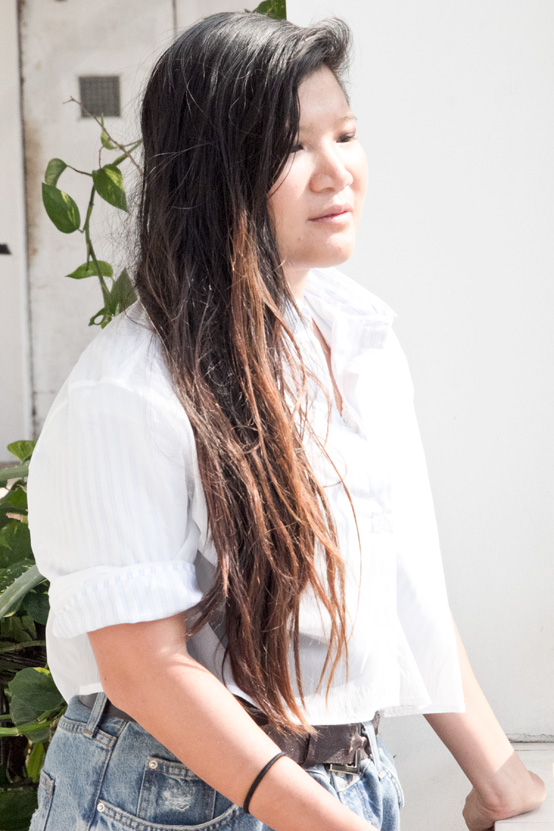 THE PROS AND CONS OF WORKING AT A START-UP: You’re a lot more independent in a start-up and you have to be your own boss, mentor, supervisor, everything. No one’s going to hold your hand and tell you what the next steps are. I hate the stereotypes but I’ll be honest—coming from a big, established company where you’re expected to be a cog in the wheel and as long you keep your little part going you don’t really need to think about it, to going to a start-up where you’re now the driver—it’s not easy and it takes a serious mental adjustment. But just because something is hard doesn’t mean you can’t do it. And I think the biggest opportunity is you really get to put your own stamp on something, and you really get to make a difference.
THE PROS AND CONS OF WORKING AT A START-UP: You’re a lot more independent in a start-up and you have to be your own boss, mentor, supervisor, everything. No one’s going to hold your hand and tell you what the next steps are. I hate the stereotypes but I’ll be honest—coming from a big, established company where you’re expected to be a cog in the wheel and as long you keep your little part going you don’t really need to think about it, to going to a start-up where you’re now the driver—it’s not easy and it takes a serious mental adjustment. But just because something is hard doesn’t mean you can’t do it. And I think the biggest opportunity is you really get to put your own stamp on something, and you really get to make a difference.
GOING WITH THE FLOW PROFESSIONALLY: I haven’t been strategic with any of my career moves, which sounds so bad on paper but actually, sometimes I have to pinch myself in amazement at how it’s worked out. Think about it: digital wasn’t even a career option when I was at university. I took a class called “Online Storytelling” and they told us how to start a blog! There’s no way I could have envisioned doing what I’m doing now, and yet it’s such an incredible opportunity. I mean, I definitely wish someone had told me this was an option, and maybe the route could have been a bit more straightforward. But there are so many changing roles out there that I don’t think there’s enough space for people on “traditional” routes, and there are also companies that require more than what those routes offer. And sure, I maybe haven’t taken the most linear route to where I am, but let’s face it: we’re going to be alive for such a long time that there’s no point in hurrying anywhere, and I’ve gained different skills from all of my roles. I always think if I had followed a traditional route I definitely wouldn’t be here!
KEEPING UP TO SPEED: The digital world is super fast and it can be hard to see everything, so I’m quite selective about what I read and see—I only focus what I think is the best and the most innovative, and I don’t waste my time on content that doesn’t excite or challenge me. There are a few tastemakers I can rely on to point me in the right direction, but a lot of is also allowing yourself time occasionally to explore, whether that’s online browsing or even physically traveling. It sounds so clichéd, but traveling really is the most inspiring, possibly because you’re seeing so many new things. I interviewed FOS, the artist who collaborates with Phoebe Philo and Céline, and I loved his phrasing of places or actions less the source of inspiration but more as catalysts, so naturally it’s a lot easier to find that spark in new places. It’s always important to be seeing new things and getting out of your routine. Also, one of the great things about the digital world is that it’s not limited by location, and I don’t limit myself by looking at what’s only available to me in the US, or even just in English. I subscribe to a lot of cool websites and e-tailers from Europe—that I’ve come across when travelling.
THE PIECE ADVICE SHE NEVER GOT BUT WISHES SHE HAD: Don’t be afraid to take risks for something you believe in. Yeah it’s so so clichéd, but I come from a very conservative background and I really wish that I had had the guts to go for what I’d really wanted earlier. But I think it bears clarifying: this doesn’t mean ‘go do something stupid’. Be smart in taking risks.
Annette was shot at her home in Bushwick, Brooklyn. This interview has been edited and condensed.

